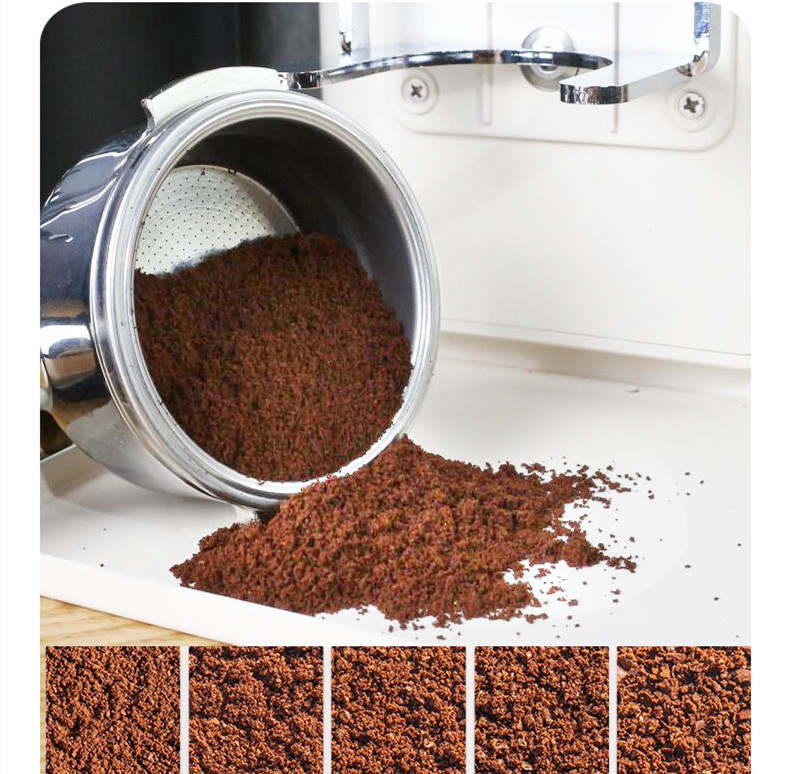How to Adjust Coffee Grind Quantity Based on Cup Size for Optimal Brewing
Understanding the Relationship Between Grind Size, Extraction Time, and Cup Volume
The foundation of adjusting grind quantity lies in balancing three core variables: grind size, extraction time, and water-to-coffee ratio. For smaller cup volumes (e.g., single espresso shots), a finer grind is typically required to maximize flavor extraction within a short time frame. Conversely, larger cup volumes (e.g., French press or drip coffee) demand coarser grinds to prevent over-extraction, which can lead to bitterness.
For instance, when brewing a 30ml espresso shot, aim for a grind size resembling table salt to ensure water passes through the puck in 25–30 seconds. If the shot extracts too quickly (e.g., under 20 seconds), the grind is too coarse; if it takes over 35 seconds, the grind is too fine. Adjust the grind setting incrementally (e.g., 0.5–1 notch finer or coarser) and test until the desired extraction time is achieved.
For larger brews like a 300ml French press, use a grind size comparable to coarse sea salt. This allows water to interact with the grounds evenly over a 4-minute steeping period without extracting undesirable compounds. If the coffee tastes weak, slightly reduce the grind size; if it’s overly bitter, coarsen the grind.
Step-by-Step Adjustment for Different Brewing Methods
Espresso: Fine-Tuning for Single vs. Double Shots
- Determine Portafilter Capacity: Most portafilters hold 18–20g of coffee for a double shot. For a single shot (30ml), use 9–10g of coffee.
- Set Grind Size: Start with a medium-fine grind (similar to table salt).
- Dial-In Extraction Time:
- If the shot runs too fast (e.g., 15 seconds for 30ml), tighten the grind by 0.5 notch.
- If it runs too slow (e.g., 40 seconds for 30ml), loosen the grind by 0.5 notch.
- Test and Repeat: After each adjustment, discard the first shot (to clear residual grinds) and pull a fresh one. Repeat until the shot extracts in 25–30 seconds.
Drip Coffee: Balancing Grind and Brew Time
- Calculate Coffee-to-Water Ratio: Use a 1:15 to 1:17 ratio (e.g., 60g coffee for 1L water).
- Set Grind Size: Aim for a medium grind (resembling sand).
- Monitor Brew Time:
- If the brew completes in under 3 minutes, the grind is too coarse; tighten it slightly.
- If it takes over 5 minutes, the grind is too fine; loosen it.
- Adjust for Taste: If the coffee tastes sour, the grind may be too coarse (under-extraction); if bitter, it’s too fine (over-extraction).
French Press: Coarse Grinds for Full Immersion
- Measure Coffee and Water: Use a 1:12 ratio (e.g., 25g coffee for 300ml water).
- Set Grind Size: Opt for a coarse grind (like breadcrumbs).
- Steep and Evaluate:
- After 4 minutes, press the plunger. If resistance is minimal, the grind is appropriate.
- If the plunger is hard to press, the grind is too fine; coarsen it for the next brew.
- Taste Test: Weak coffee indicates a too-coarse grind; bitter coffee suggests a too-fine grind.
Common Pitfalls and Solutions
Inconsistent Grind Size
Issue: Blade grinders produce uneven particles, leading to uneven extraction.
Solution: Use a burr grinder for consistent results. If using a blade grinder, pulse in short bursts and shake the grinder between pulses to mix grounds.
Residual Grinds Affecting Adjustments
Issue: Old grinds stuck in the burrs can alter the effective grind size.
Solution: After adjusting the grind setting, run the grinder for 5 seconds to clear residual particles. For major adjustments, grind a small amount of coffee and discard it before brewing.
Ignoring Bean Freshness and Roast Level
Issue: Freshly roasted beans release more CO2, requiring a coarser grind to prevent channeling (in espresso) or clumping (in drip coffee). Darker roasts extract faster and may need a coarser grind than lighter roasts.
Solution: For fresh beans, start with a slightly coarser grind and adjust finer if under-extracted. For dark roasts, begin with a medium grind and refine based on taste.
By mastering these adjustments, you can ensure that every cup—whether a tiny espresso or a large French press—achieves the perfect balance of flavor, aroma, and body.


